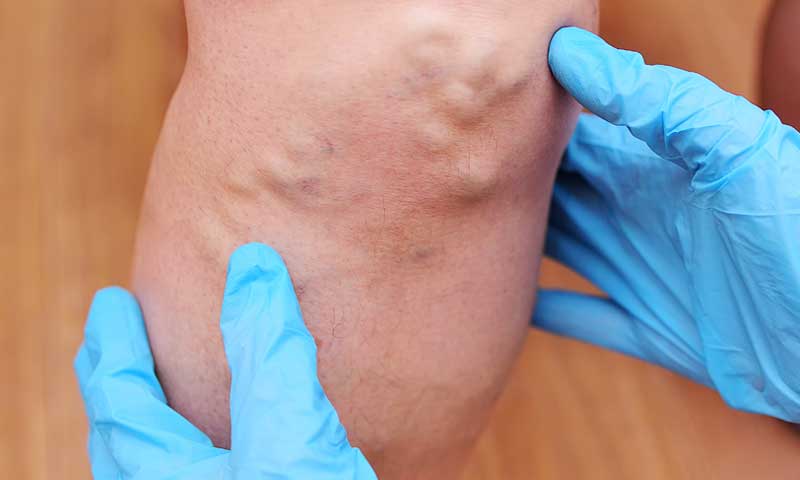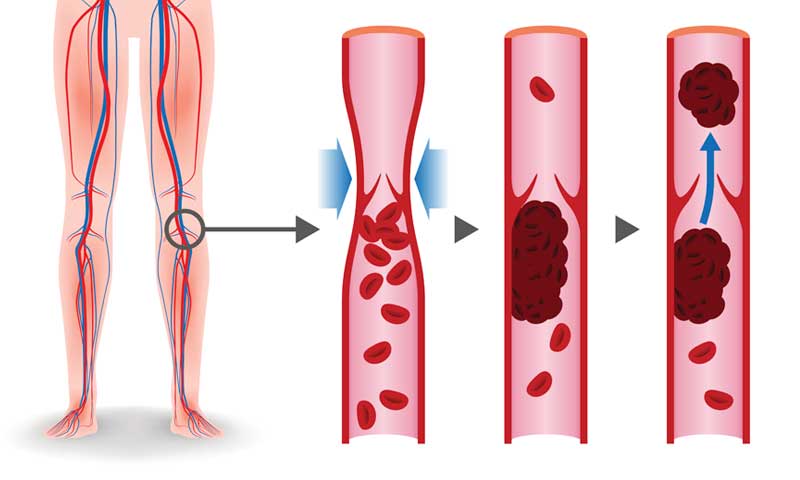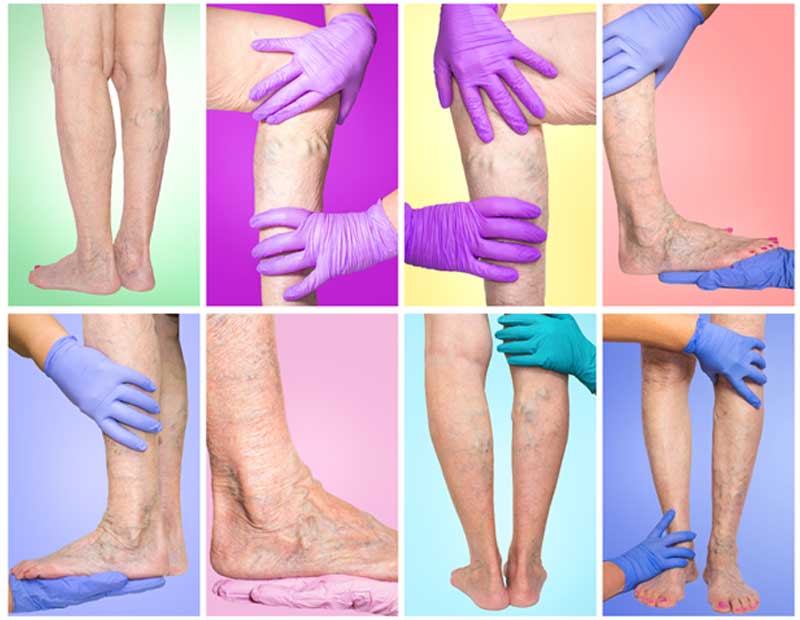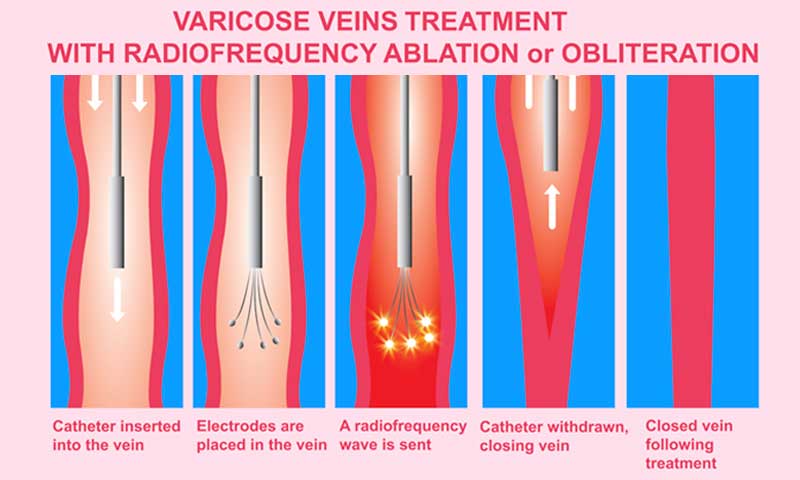This blog covers the basics of venous insufficiency a precursor for chronic vein insufficiency( CVI). It also goes into detail about the symptoms, causes and common treatments of CVI.
Over 40% of people in the United States have chronic venous insufficiency. Early detection is key to preventing damage caused by vein disease.
That’s why we’ve put together a guide on everything there is to know about CVI and how a vein specialist can help remediate symptoms.
What is CVI?
Chronic venous insufficiency or CVI is an acute or persisting form of venous insufficiency. Venous insufficiency is a vein disease that occurs when valves in the leg are not working properly.
When these valves are not functioning, it becomes difficult to return blood to the heart. Blood will then begin to collect and pool. The “pooling” of blood in our veins is called stasis.
What Causes CVI?
First, let’s go back to basic biology with the anatomy of a vein and our circulatory system. Our heart pumps blood through the arteries to our entire body to keep it functioning.
Our veins are responsible for returning blood to the heart. In order to reach the heart, our blood needs to flow upward from our legs.
To do this, our leg muscles contract while walking. This causes our veins to push blood against gravity and towards our heart.
However, something else needs to be in place to keep our blood flowing up, not down. That’s where valves gain their importance.
Each vein in our legs contains one-way valves. These valves are responsible for keeping blood flowing in an upward direction.
When they are not properly functioning, valves no longer have the ability to direct blood. This allows blood to pool and collect which causes CVI.
Valve damage is a common cause of CVI and can occur due to several reasons. It can result from simply aging or from extended sitting and reduced mobility.
Although, the most common cause of CVI is Deep Vein thrombosis (DVT).
CVI vs DVT
DVT occurs when a blood clot forms in one of the veins deep inside your body.
CVI differs from DVT mainly due to its causes. CVI can often occur without a clear-cut reason whereas DVT happens because of immobility.
People often develop blood clots after surgery or traveling for that reason.
Learn more about understanding and preventing DVT.
Symptoms of CVI
Over time, CVI can cause many symptoms and affect our bodies in more ways than one.
CVI can cause severe pain and swelling in your legs, feet, or ankles. It can also cause changes to the skin on your legs that lead to ulcers or open sores.
Venous ulcers are painful and notoriously known to be very difficult to heal. Venous ulcers also have a high tendency to become infected, causing even more trouble for your body.
If you have any symptoms of CVI, it’s better to see a doctor sooner rather than later. Non-invasive treatments become limited if the disease is left untreated.
Here are more common symptoms of CVI:
• Swelling in lower legs or ankles
• Aching in legs
• New varicose veins
• Flaking or itching skin near legs and feet
• Stasis ulcers
Stages of CVI
The severity of CVI depends on how long it’s left untreated. Symptoms of CVI increase as the disease progresses and so do the hidden health risks. Therefore, getting an early diagnosis of CVI can be the difference between having subtle or severe symptoms.
Once showing the common symptoms of venous insufficiency, patients should seek medical advice from their doctor.
For a formal diagnosis, your doctor may use a venous ultrasound to examine the blood circulation in your legs.
When left untreated, CVI can often reach a dangerous stage. Eventually, the pressure and swelling will get too much for our veins to handle.
This can lead to blood vessels in our legs bursting. The overlying skin in this area is then very sensitive and susceptible to cracking.
Treatments
After diagnosis, your doctor may treat CVI and its symptoms using several different methods.
These can include compression stockings or antibiotics, depending on the severity of the case.
The overall goal should be to improve your circulation and decrease venous insufficiency.
Compression Stockings
Compression stockings are the most common treatment for mild cases of venous insufficiency.
Compression stockings are lightly-fitted support stockings or socks.
Compression therapy aids the body in moving blood up the leg against the pull of gravity. They are used to improve circulation and reduce swelling in the legs.
Compression therapy is also used to aid in healing after various types of vein surgery.
Antibiotics
A doctor may prescribe antibiotics to resolve any skin issues related to CVI. Issues can include deep skin infections caused by ulcers or sores.
Antibiotics will not treat the underlying issues of CVI, but they can still help clear up skin problems that manifest.
Sclerotherapy
Sclerotherapy is the most common spider vein and smaller varicose vein treatment. It involves injecting a solution directly into veins. The solution then causes the veins to collapse and disappear.
Sclerotherapy is one of the easier solutions to vein issues. Treatment time depends on the specific case but can take anywhere from 15 minutes to an hour. Sclerotherapy is minimally invasive and requires only topical anesthesia.
Sclerotherapy is typically used to treat spider veins or varicose veins. However, it can also treat symptoms of CVI. Treated veins usually disappear in three to six weeks. Some larger veins take longer.
Up to 80% of the spider veins treated will disappear with each treatment.
Endovenous Thermal Ablation
Endovenous Laser Treatment (EVLT) is a superior treatment for vein problems. It is also known as laser vein ablation or obliteration.
Unlike conventional surgery, EVLT provides much less risk and is extremely precise.
A catheter with a laser tip is inserted into the vein. Ultrasound imaging helps guide exactly where to position the laser. The laser tip catheter is then activated inside the affected vein to shrink it down and seal it.
This stops the blood flow to that vein and diverts it into others. It increases circulation and relieves existing symptoms of CVI.
This outpatient treatment takes less than an hour and is minimally invasive. Relief of symptoms begins within several days of the procedure.
Ambulatory Phlebectomy
Ambulatory phlebectomy is a minimally invasive outpatient procedure. It involves removing incompetent, superficial, or varicose veins.
This treatment is usually done on larger veins that bulge above the surface of the skin.
CVI can often be debilitating to deal with. But a CVI diagnosis does not mean you’re left without options. There are many treatments available to ease symptoms and vein issues. Finding the right vein specialist is the first step to recovery.
At the New Jersey Vein and Vascular Center, we’re committed to personalized vein care. Our goal is to diagnose and treat the underlying causes of various vein conditions.
For more on our vein services and treatments, please contact us today.






